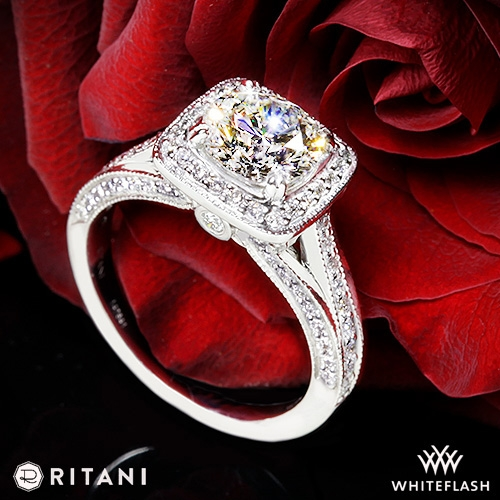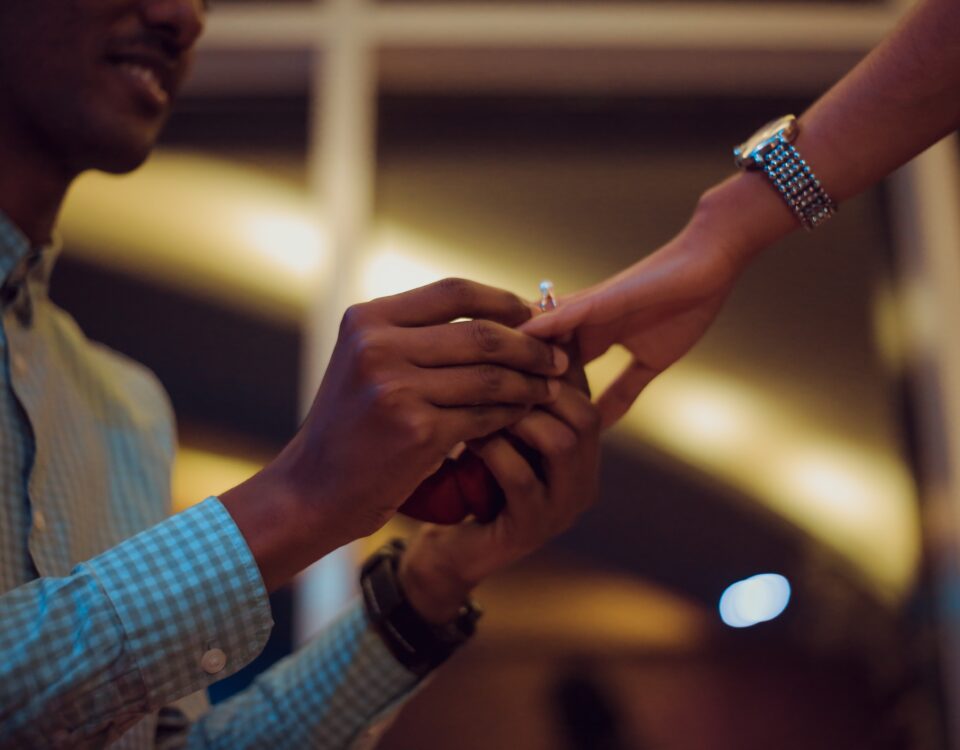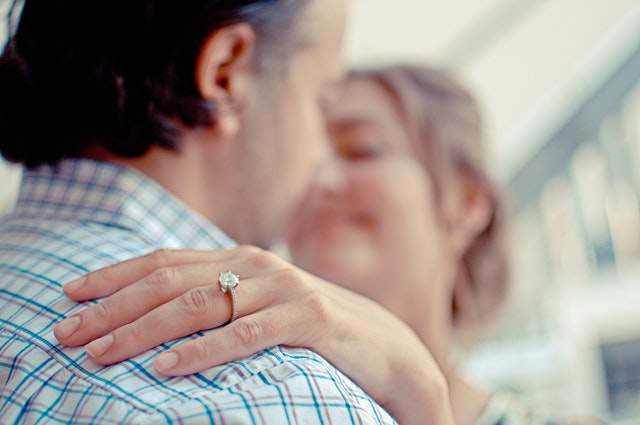
Fake Diamonds: What to Avoid When Shopping for a Diamond Online
May 20, 2020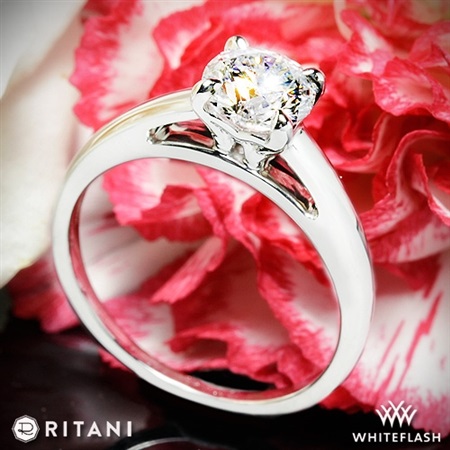
Cathedral Settings: A Complete Guide
May 20, 2020Pavé Diamond Engagement Ring Settings: A Complete Guide
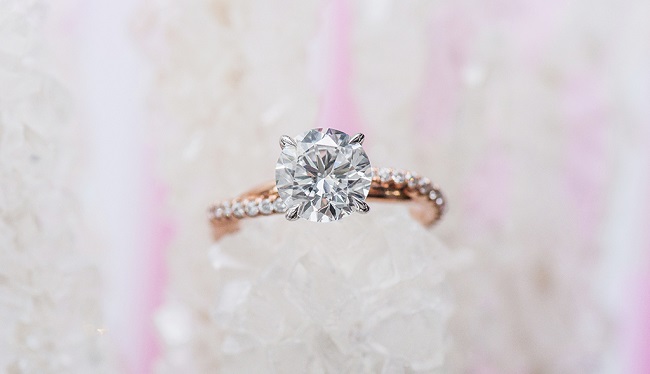
Since we first started using diamonds for jewelry purposes, diamond cutters, designers and jewelry makers have honed their crafts and refined their techniques to create lavish designs suitable for royalty.
One of the most complex and beautiful techniques in any jewelers’ repertoire is pavé. However, not all pavé is created equal; this guide will tell you what to look for in these striking settings.
What is Pavé?
Pavé is taken from the French word meaning ‘to pavé’; small diamonds are set closely to give the impression of a continuous path of sparkling diamonds across a shank. The diamonds are held in place with very smalls prongs; diamonds used for pavé are between 0.01ct and 0.02ct; anything below this considered ‘micro-pavé’.
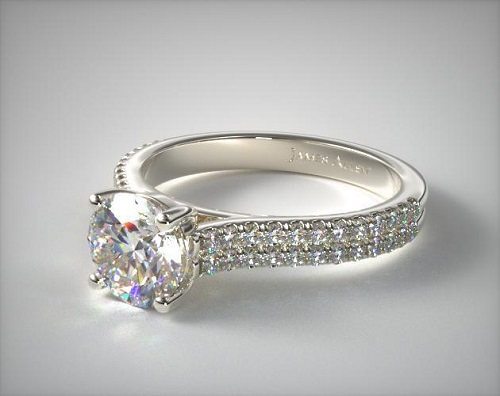
Image Courtesy – James Allen
Types of Pavé
As jewelry making and engagement ring trends have developed across the centuries, so too have the setting styles. There several methods used to create a pavé setting, each with their own unique nuances. This over-view should help you unravel engagement ring descriptions when searching for your pavé engagement ring.
French Pavé
The French pavé style sets diamonds into the shank in small, v-shaped grooves. The result is a pavé setting where you can see more of the diamonds and less metal.
View this post on Instagram
The distinctive V-shaped indents of a French pavé setting.
Micro-Pavé
Micro-pavé uses much smaller diamonds (and lots of them) for an incredibly sparkly appearance. Some people prefer the precision of micro-pavé over a traditional pavé style. The stones are set into drill holes on a band and set with tiny metal prongs. The modern understanding of a ‘true’ micro-pavé setting is that it must include four prongs to hold each diamond in place for a seamless fire across the shank. This style of setting requires acute attention to detail.
Petite Pavé
Petite pavé uses the traditional pavé technique but with smaller prongs to hold each diamond in place – the result is a more continuous appears, with the metal blending seamlessly with the diamonds for a truly ‘pavéd’ effect.
There are several other terms that are often confused with the classic pavé settings. When looking at engagement rings, you may hear the following:
Millgrain
Millgrain, (sometimes written as milgrain or milgraine) is a jewelry technique that uses small beads of metal to create ornate boarders. Particularly popular in the art deco era, millgrain can be used to adorn vintage style engagement rings. Millgrain is not the same as pavé – achieving a millgrain effect is much more straightforward and does not use diamonds or gemstones.
Melee
Melee is a term used to describe the very small, diamonds used for a pavé setting. The quality and cut of the melee will dictate how sparkly and impactful a pavé setting looks. Single cut melee are diamonds cut in a vintage style which only feature 17 facets (vs the 24 of a round brilliant).
If you’re looking for the best brilliance and fire use a reputable jewler like Whiteflash. If your budget is a little smaller I would recommend Blue Nile or James Allen.
Pavé Engagement Rings: Pros and Cons
An engagement ring must tick boxes of budget, beauty and practicality. Pavé engagement rings are unquestionably beautiful, but my list of pros and cons will help you decide if it is the right setting for you.
Pros
- Spanning from Victorian, art deco and right up to the most contemporary designs, pavé lends itself to a variety of engagement ring styles
- Pavé adds sparkle to a band an brings light to the central diamond without dominating it
- For those who love the depth and clarity of a step cut but year for sparkle, combining a step-cut diamond with a pavé setting is a great way to get the best of both worlds
Cons
- Due to the setting method, pavé can have a rough finish (from the small claws and diamonds) which can catch on clothes and other materials. For example, a pavé ring may not be suitable for those who wear protective gloves at work.
- Pavé rings are extremely difficult to resize – very few jewelers will agree to re-size a pavé ring and if they do, there is no guarantee that the durability of the diamonds will not be compromised
- There is a small risk of losing diamonds from a pavé engagement ring – choosing high quality settings will go some way to preventing this.
The Final Word
Modern jewelry making methods have simplified the pavé setting method, however it is still a complex and precise style that requires incredible craftsmanship. A low-quality pavé will be lacklustre and risks losing stones.
James Allen carries a nice collection of pavé diamond engagement rings, particularly those looking for a vintage style.
For the pinnacle of durability and beauty, I recommend taking a look at Whiteflash and their exquisite collection of designer pavé engagement rings. Their commitment to high quality, well cut diamonds via their A CUT ABOVE® range carries through from their largest central stones to the tiniest of melees and the difference can truly be seen.


